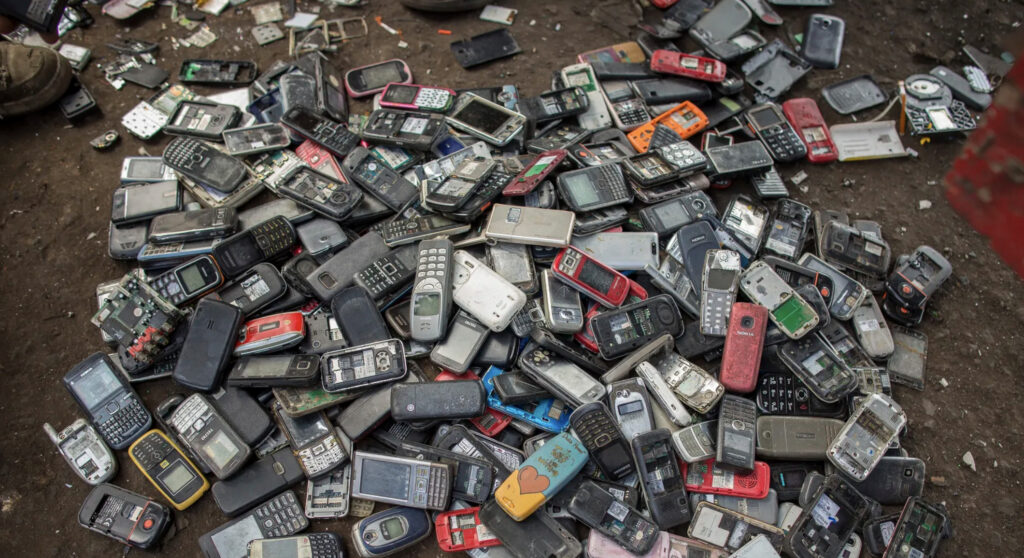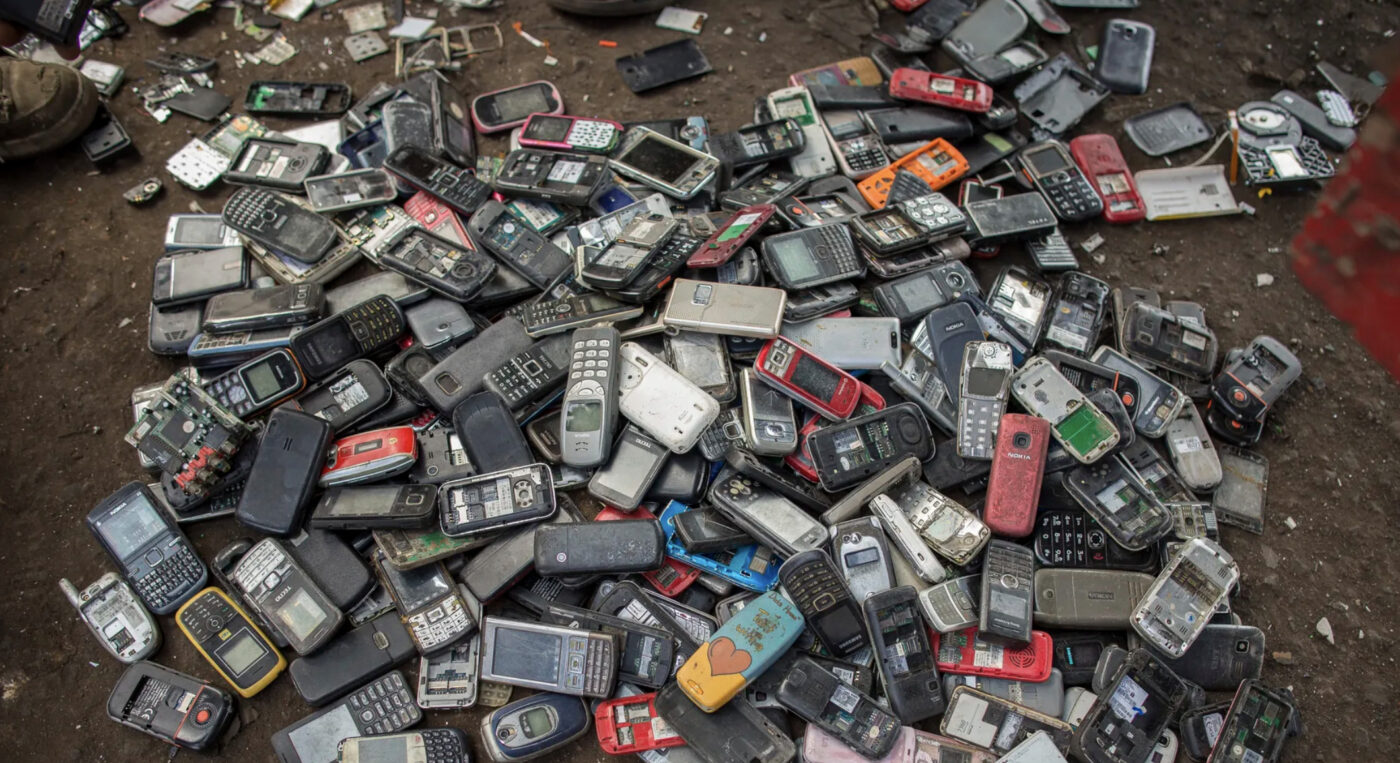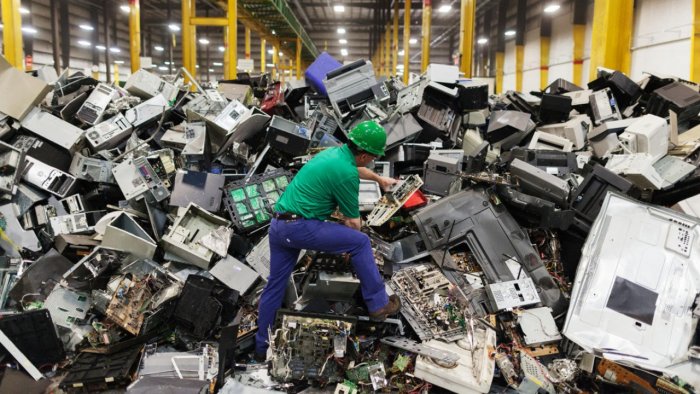
As new inventions give impetus to technological advances, the 21st century is witnessing the steady, yet exponential, emergence of electronic articles. The world has shown its unequivocal support towards this rise by owning a stake in this tech revolution. Mass production of Mobile Phones, Smart Watches, Laptops, Televisions and other items in recent years are a testament to this unwavering trend. Although the contribution of these devices towards our civilization is immense, humanity has led itself into a tangle, one which continues to remain a passive threat to our planet. E-Waste contaminating the Earth, an ever-increasing carbon footprint, and improper resource utilization have concerned environmentalists for a long while. Thrift culture, however, may serve as a deus ex machina by unravelling the proverbial wires and impeding the ecological crisis at hand.
What is Thrifting?
Thrifting is the practice of buying second-hand articles which are still functional. It saw its inception among fashionistas who sought to combat the emergence of fast fashion, a culture referring to the production of high volumes of clothing articles. Customers would buy pre-owned clothes sold at a low markup price which attracted many on a budget, or those who wanted to adopt a rather sustainable lifestyle. The foregoing concept is already deeply rooted in Indian culture; The elder sibling forsaking their old possessions for their younger counterpart is a recurring ritual in many Indian households.
“There is a kind of beauty in imperfection.”
—Conrad Hall
Since its rise in popularity in the 2010s, thrifting has also found its home in the technological sphere. With a new flagship device being released every now and then by some electronics company, people feel the need to upgrade to not miss out. The pace of our industries, however, makes it extremely unpragmatic for consumers to keep up due to the price tags on newly released devices. The growth of this consumerism is being battled by thrifting, where people need not rely on only big, established retail stores to empty their shelled-out pockets.
Thrifting Out: Why we Need to Start Thrifting
Thrift-Tech is the need of the hour and this can be understood by looking at the adversity of e-waste and the tribulations it puts forward for our ecology. E-Waste or Waste from Electrical and Electronic Equipment (WEEE) are products which run on electric power when they reach their End-Of-Life stage, They usually contain hazardous substances like Mercury, Lead, Lithium, Cadmium and other toxins which call for concern.
Source: United Nations Environment Programme
According to a 2020 report by the Central Pollution Control Board (CPCB) of India, the country generated 708,445 tonnes of e-waste in 2017-18 and 771,215 tonnes in 2018-2019. In 2019-20, the figure rose 32 per cent to 1,014,961 tonnes, making it one of the largest contributors to the production of e-waste. India also receives a lot of electronics shipments from developed countries and Multinational Companies (MNCs) and serves as a node for the production and repair of products due to the availability of labour, resources, and land.
India suffers from inadequate infrastructure for formally recycling e-waste, most of which belongs to the informal sector. This leads to work practices which are not efficient or safe and the resultant unorganized disposal leads to a plethora of issues. E-Waste is non-biodegradable and pollutes the air, water, and soil by accumulating in the environment. Unregulated burning, shredding, and dismantling of e-waste lead to the release of various harmful particles which pollute the air and soil. Soil contamination by heavy metals such as Mercury, Lead, and Barium can also leak even further to reach water beneath the ground level.
These insidious processes eventually hurt humans as well as the entire biota in the periphery of these landfills and dumping sites. High levels of heavy metals in the body can cause acute and chronic toxicity, liver, kidney, and intestinal damage, and cancer. The toxins released while burning e-waste can also develop chronic diseases and cancers in the people who operate in crude landfills. Pregnant women also suffer due to increased miscarriages, still, and premature births, high infant mortality as well as other birth defects. Consuming produce grown in contaminated soil can be harmful to wildlife and further affect the food chain. Heavy metals in food plants can accumulate in the human body and can lead to psychotic disorders and many debilitating diseases.
Apart from the aforementioned health debacle, e-waste mismanagement also besmirches the human endeavour for resource conservation and wastes many valuable minerals. According to a 2019 report, “A New Circular Vision for Electronics – Time for a Global Reboot” by the World Economic Forum (WEF), “ Up to 7% of the world’s gold may currently be contained in e-waste…The improper handling of e-waste is resulting in a significant loss of scarce and valuable raw materials, including such precious metals as neodymium (vital for magnets in motors), indium (used in flat panel TVs) and cobalt (for batteries) ”. Even after recovery, metals in e-waste are only recovered to a certain extent; for example, Cobalt is recoverable up to 30% from WEEE.
Desi Thrifting: The Indian Take
As India watches its e-waste crisis with bated breath, several thrifting services can be cited to have helped by growing the thrifting culture in India from the sidelines. Housing the second largest second-hand smartphone market globally, India has a large retinue contributing to its market. From small shops hidden in narrow alleyways to big registered retailers, the sale of used articles is taking place on an admirable scale in India. Online classifieds sites and marketplaces like Olx, Quikr, and Cashify are empowering budget-tight people by providing the facility to buy, sell, and rent second-hand gadgets.
Such companies have especially seen massive success in India due to the country’s largely predominant bourgeoisie which relies on affordability. A report published by the Indian Cellular and Electronics Association (ICEA) and the International Data Corporation (IDC) predicts India’s smartphone market will have 51 million traded second-hand devices and have reached $4.6 billion by 2025, a stark rise from 25 million units in 2021.
Juxtaposed to thrift culture in fashion, electronics sometimes can also be sold after refurbishment if the need arises. Devices which only require slight repairs are sent for grading, checked for Quality Control (QC), refurbished, and finally delivered to retailers. Companies like Cashify and Yaantra engage in third-party repairing and even offer doorstep repair facilities. This unique aspect of Thrift-Tech expands the possibilities of reusability for electronic devices far and beyond.
Source: iStock
“The greatest threat to our planet is the belief that someone else will save it.”
—Robert Swan
For our planet is showing a tinge of deterioration, people around the world should work towards the rehabilitation of our green planet. According to Global E-Waste Monitor 2020(GEM), “approximately 53.6 million metric tons of e-waste was generated in 2019…It is also estimated that the amount of e-waste generated will exceed 74 million metric tons in 2030”. In such a dire scenario, our efforts should not be unilateral, our actions should be holistic and involve every person from all walks of life.
Thrift Culture has helped society to realize this goal and integrate sustainable precepts into our daily lives. The rise of e-retailers selling pre-used articles in India is a precursor to a commitment to attenuate its WEEE generation. As the winds of change flow, newer generations around the world are understanding it is incumbent on them to raise awareness, as well as actively participate, for their own future.
Written by Yoihen Elangbam for MTTN
Edited by Shivraj Herur for MTTN
Featured Image courtesy of Wired.com



Leave a Reply
You must be logged in to post a comment.